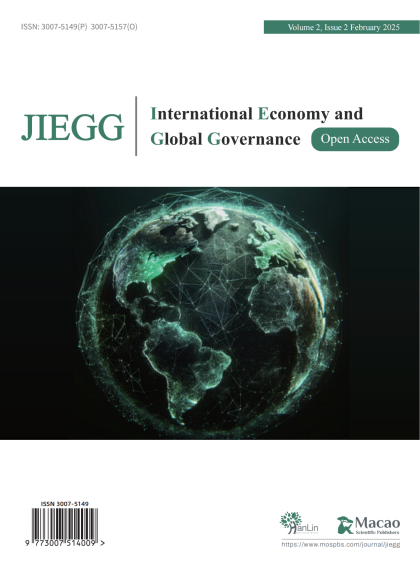-
Galanos, V. (2023). Expectations and expertise in artificial intelligence: specialist views and historical perspectives on conceptualisation, promise, and funding.
-
Kastner, J. K., & Hong, S. J. (1984). A review of expert systems. European journal of operational research, 18(3), 285-292.
-
Boyd, R., & Holton, R. J. (2018). Technology, innovation, employment and power: Does robotics and artificial intelligence really mean social transformation?. Journal of Sociology, 54(3), 331-345.
-
Helbing, D. (2019). Societal, economic, ethical and legal challenges of the digital revolution: from big data to deep learning, artificial intelligence, and manipulative technologies (pp. 47-72). Springer International Publishing.
-
Stuart Russell and Peter Norvig. 2010. Artificial Intelligence: A Modern Approach (3 ed.). Prentice Hall.
-
Müller, A. C., & Guido, S. (2016). Introduction to machine learning with Python: a guide for data scientists. O'Reilly Media.
-
Bishop, C. M. (2006). Pattern recognition and machine learning (Information Science and Statistics series). Springer.
-
LeCun, Y., Bengio, Y., & Hinton, G. (2015). Deep learning. Nature, 521(7553), 436-444. https://doi.org/10.1038/nature14539
-
Krizhevsky, A., Sutskever, I., & Hinton, G. E. (2012). ImageNet classification with deep convolutional neural networks. In Advances in neural information processing systems (Vol. 25, pp. 1097-1105).
-
Hochreiter, S., & Schmidhuber, J. (1997). Long short-term memory. Neural Computation, 9(8), 1735-1780. https://doi.org/10.1162/neco.1997.9.8.1735
-
Zwitter, A. (2014). Big data ethics. Big Data & Society, 1(2), 1-6. https://doi.org/10.1177/2053951714559253
-
Vaswani, A., Shazeer, N., Parmar, N., Uszkoreit, J., Jones, L., Gomez, A. N., Kaiser, Ł., & Polosukhin, I. (2017). Attention is all you need. In Advances in neural information processing systems (Vol. 30).
-
Brown, T. B., Mann, B., Ryder, N., Subbiah, M., Kaplan, J., Dhariwal, P., ... & Amodei, D. (2020). Language Models are Few-Shot Learners. NeurIPS 2020, 33, 1877-1901. https://arxiv.org/abs/2005.14165
-
Bommasani, R., Hudson, D. A., Adolphs, R., Schuessler, H. F., & Weld, D. S. (2021). On the Opportunities and Risks of Foundation Models. Communications of the ACM, 64(12), 62-71. https://doi.org/10.1145/3460218
-
Vallor, S. (2022). Technology and the Virtues: A Philosophical Guide to a Future Worth Wanting. Oxford University Press.
-
Shin, D., Lee, H., & Lee, S. (2023). The Governance of Artificial Intelligence: Perspectives, Challenges, and Solutions. AI & Society, 38(4), 845-859. https://doi.org/10.1007/s00146-023-01598-2
-
Ye, J. (2023). China’s AI “War of a hundred models” heads for a shakeout. Reuters. https://www.reuters.com/technology/chinas-ai-war-hundred-models-heads-shakeout-2023-09-21/
-
Kaplan, J., Henighan, T., Chess, B., Child, R., Gray, S., Brown, T. B., Ko, A., Dennison, D., & Amodei, D. (2020). Scaling laws for neural language models. arXiv preprint. https://arxiv.org/abs/2001.08361
-
Smith,J. (2023). The Llama 3 Herd of Models. arXiv, 2407.21783.
-
Hestness, J., et al. (2023). Large Language Monkeys: Scaling Inference Compute. arXiv preprint arXiv:2305.12148.
-
OpenAI. (2024). Learning to reason with LLMs. OpenAI Blog. https://openai.com/blog/learning-to-reason-with-llms
-
Villalobos, P., Ho, A., Sevilla, J., Besiroglu, T., Heim, L., & Hobbhahn, M. (2024, June 4). Will we run out of data? limits of LLM scaling based on human-generated data. arXiv.org. https://arxiv.org/abs/2211.04325
-
Anwer, S., Hosen, M. S., Khan, D. S., Oluwabusayo, E., Folorunso, M. M. H. M., & Khan, H. (2024). Revolutionizing the global market: An inclusion of AI the game changer in international dynamics. Migration Letters, 21(13), 54-73.
-
Garcia, E. V. (2024). The technological leap of AI and the Global South: deepening asymmetries and the future of international security. In Research Handbook on Warfare and Artificial Intelligence (pp. 370-387). Edward Elgar Publishing.
-
Mügge, D. (2024). Eu AI sovereignty: for whom, to what end, and to whose benefit?. Journal of European Public Policy, 1-26.
-
Collingridge, D. (1982). The social control of technology.
-
Wallach, W., & Marchant, G. E. (2018). An agile ethical/legal model for the international and national governance of AI and robotics. Association for the Advancement of Artificial Intelligence.
-
International Telecommunication Union. (2017). AI for Good. https://aiforgood.itu.int/about-us/#:~:text=AI%20for%20Good%20was%20established,industry%2C%20civil%20society%20and%20UN.
-
Cavanagh, C. (2023). U.S. economic restrictions on China: Small yard, high fence?. Georgetown Security Studies Review. https://georgetownsecuritystudiesreview.org/2023/12/26/u-s-economic-restrictions-on-china-small-yard-high-fence/
-
United Nations. (2024). Enhancing international cooperation on capacity-building of artificial intelligence : resolution / adopted by the General Assembly. https://digitallibrary.un.org/record/4054005?ln=en&v=pdf

